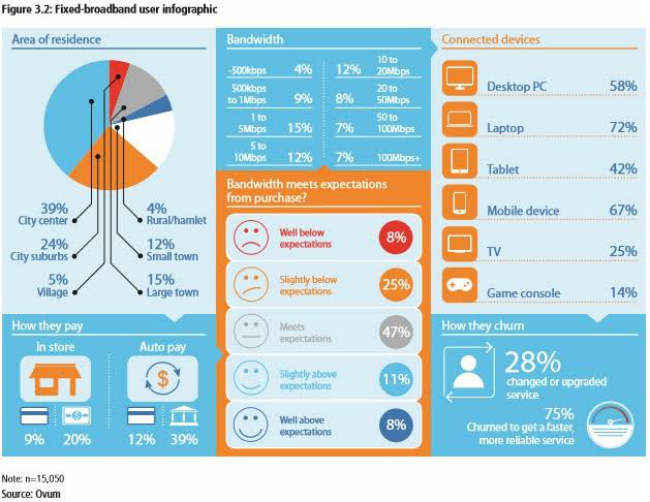
A white paper released by Ovum has pegged the minimum download speed at 10Mbps for a seamless broadband experience.
Technology research and advisory firm, Ovum, says that 10Mbps (megabits-per-second) should be the new minimum speed for broadband. It arrived at the figure after conducting an extensive survey on the fixed broadband market in 30 countries.
The white paper suggests that in order to provide the best broadband experience, the network should have a waiting time of less than 3 seconds, a minimum speed of 10Mbps, and an excellent customer service. Ovum conducted a consumer survey in 30 countries, on the basis of which it created a Global Broadband Experience Scorecard to compare the quality of broadband experience. Results of the survey indicate that online video streaming in either standard-definition (SD) or high-definition (HD) is one of the key applications that determine the broadband experience. The research suggests that a minimum of 10Mbps speed is required for Internet applications and SD video and 50+Mbps for UHD/HD video.
Practice Leader, Consumer Services and co-author of the report, Michael Philpott says, “demands on broadband service provided to consumers is compounded by the rise in connected devices. Homes in mature markets were found to typically have up to four devices connected to the network, all of which have the potential to support a wide range of applications.”
The Global Broadband Experience Scorecard takes into account the opinion of the consumers about their overall broadband experience. Accordingly, each country is rated on the basis of current connectivity, growth momentum, customer network score, and service and application experience. An overall score is attributed to each of the countries that sees Sweden occupying the top position with a score of 88%. Interestingly, some countries were pulled back despite having a high penetration due to poorer perception of the broadband experience. India, quite predictably lags behind. The paper mentions that “ fixed broadband affordability is holding back consumers in some of the least developed markets, such as India and Indonesia where household penetration is approximately 6%.”
“Ever since broadband services were launched, there has been discussion on what is the definition of broadband and how much speed do consumers really need? In 2015, the answer is at least 10Mbps if you wish to receive a good-quality broadband experience, and a significant number of households, even in well-developed broadband countries, are well shy of this mark. With a clear link between poor user experience and customer churn, broadband service providers need to continue to invest in broadband infrastructure in order to provide their customers with the best broadband experience and maintain a satisfied customer base,” Philpott concluded.
Although India is one of the fastest growing markets, it still has miles to go before getting anywhere near the 10Mbps mark. Last year, TRAI raised the definition of broadband in India from 256Kbps to 512Kbps and last week, it was reported that BSNL will offer a minimum of 2Mbps speed from October 1.





